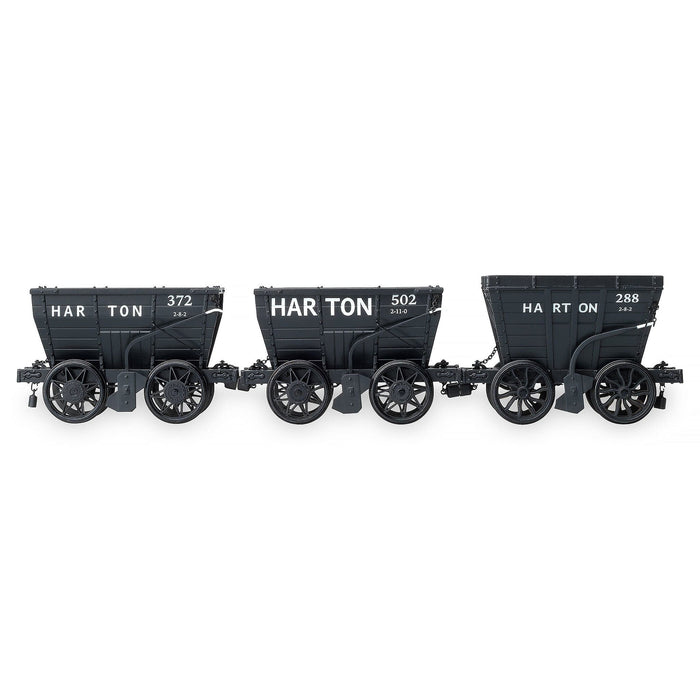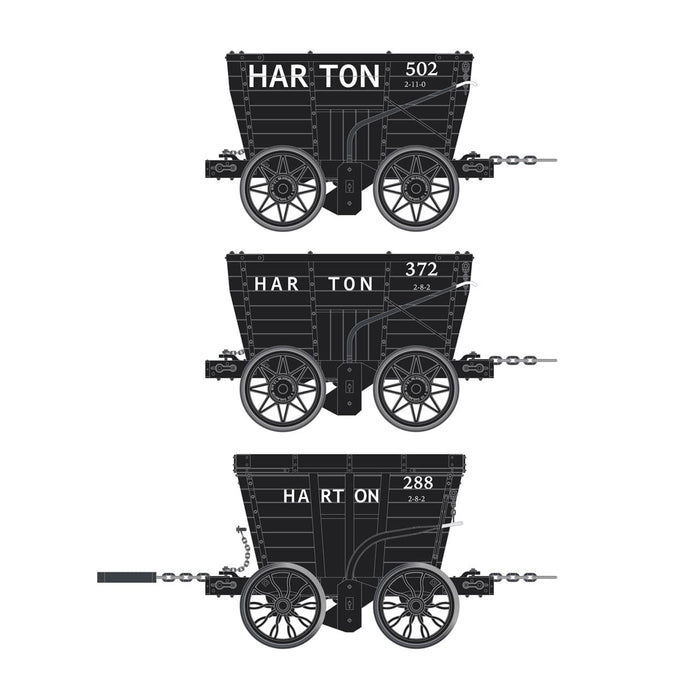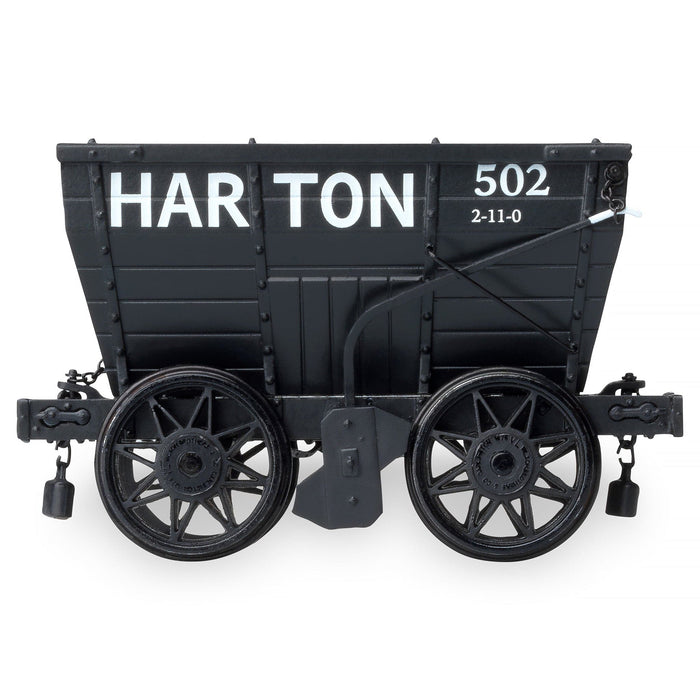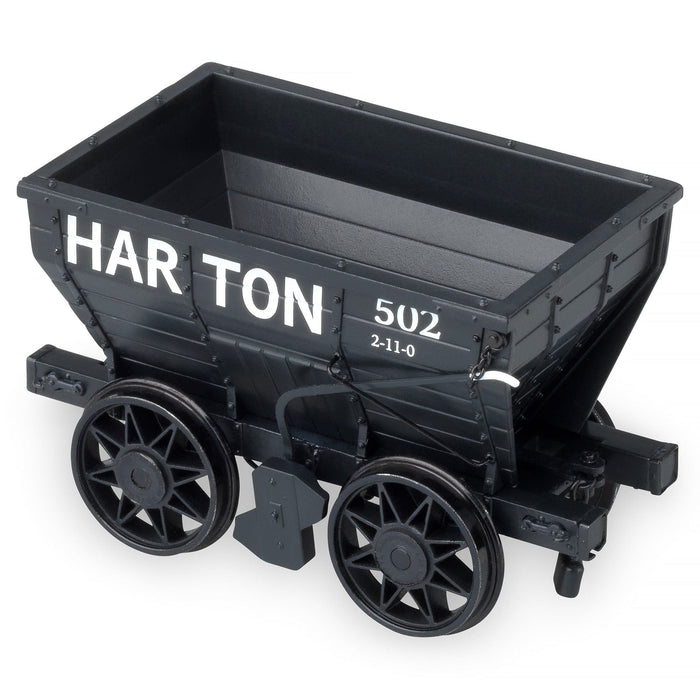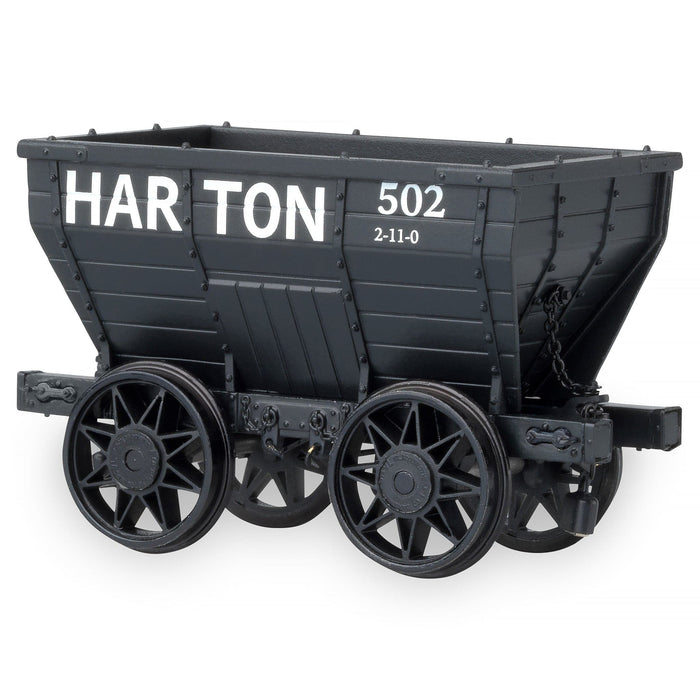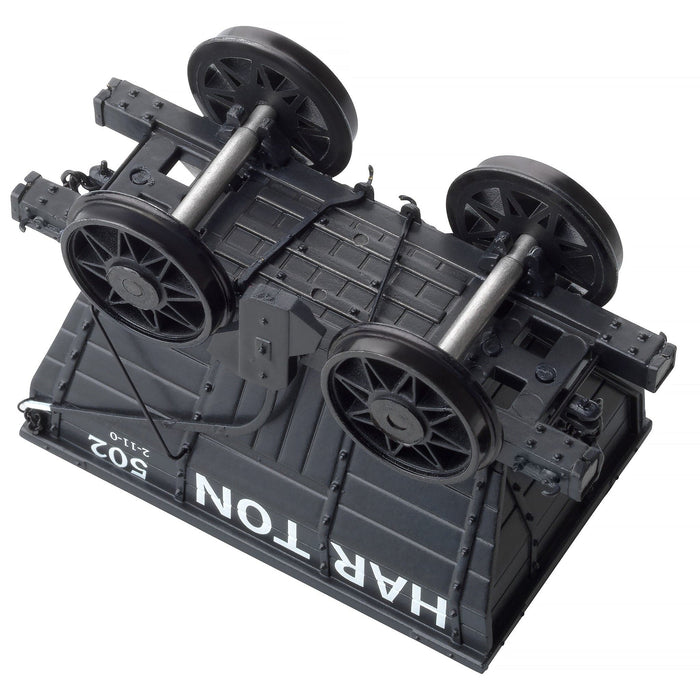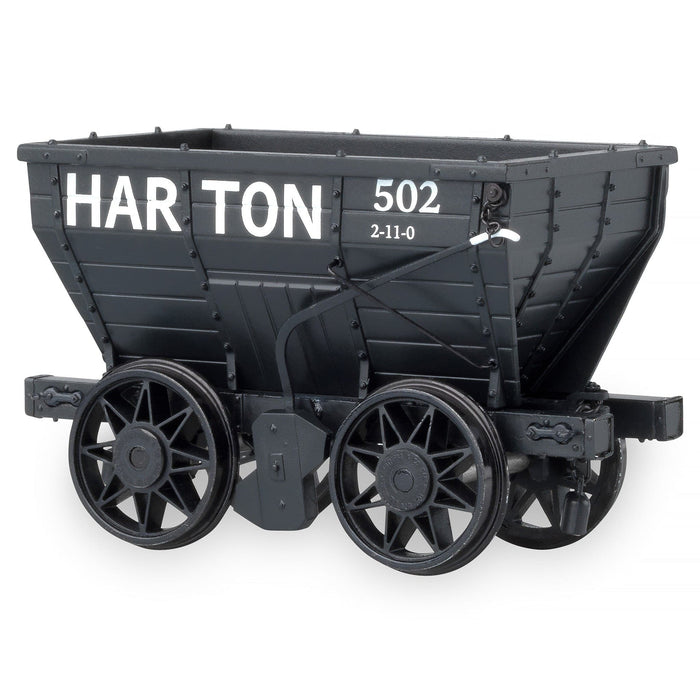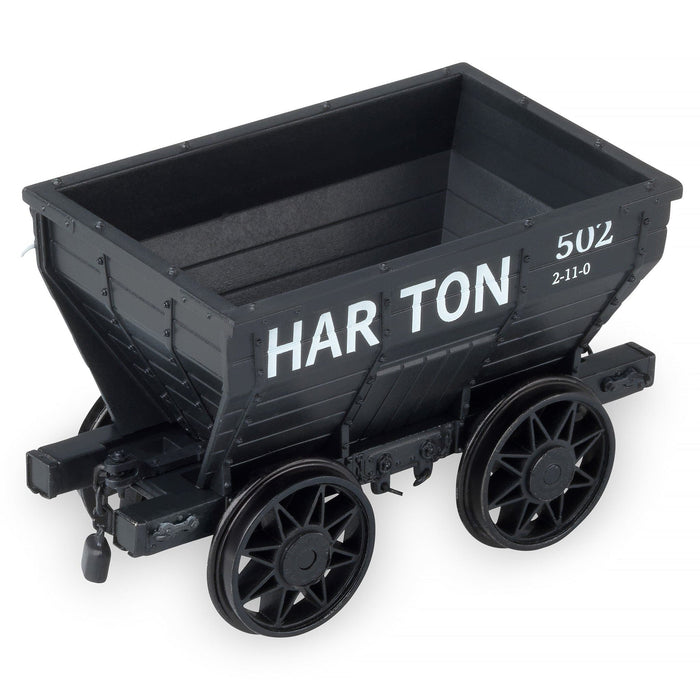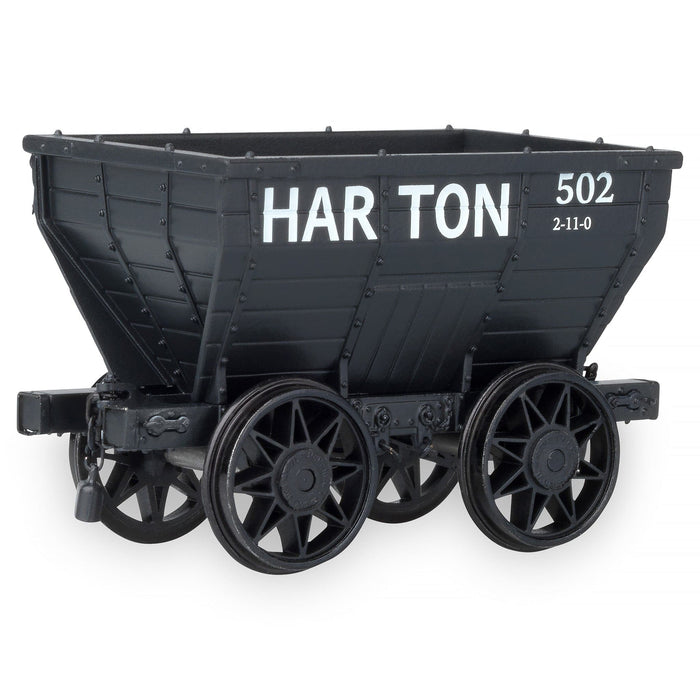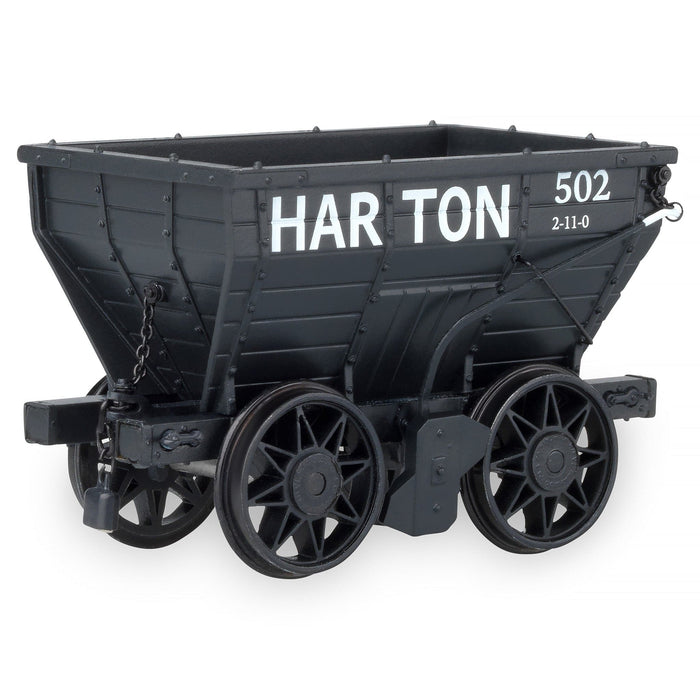

Three wagon multi-pack, NER 4T Chaldron
Pack O: The Harton Coal Company - With two sets of Staiths on the River Tyne, the area around South Shields was the centre of the Harton Coal Company’s operations, its pits being linked by an extensive railway system. This system was electrified in 1907, and the Chaldrons were a common sight on the system until the inter-war years, when the fleet was disbanded, with a number of differing lettering styles being utilised.
Two P1 style Chaldrons and an S&DR style Chaldron, circa 1910, numbered:
- 502
- 372
- 288
Each pack produced has been themed by colliery, and each waggon depicted is based on photographic evidence and reference to colliery records to confirm lettering styles. Some packs contain just one style of waggon, while others contain mixed styles where research has shown that they operated in conjunction with each other.
Specification List:
- Die-cast metal chassis with plastic body. Weight of 9g unloaded.
- Operates over minimum radius curves (371mm, 1st radius set-track)
- Five different body designs, covering a time period from 1840 to 1978.
- Three styles of wheel design; split spoke, star spoke and wave spoke, to a blackened 00 gauge RP25-88 profile.
- Three styles of braking arrangement and brake handles, with different block types and the more complicated Londonderry clasp type brake.
- Three arrangements of ‘bang-boards’.
- Additional, removable ‘greedy boards’ (horizontal board extensions to the body) to the Shildon Works built Chaldron, giving an increased coal loading.
- Scale width wire handrails, metal pin jaw coupling and wire/etch handbrake levers.
- Eroded metal/plastic detail parts, including grab handles, door securing pins, chassis chain points and safety chains in metal.
- Wagons connected via an all new link fine chain with Neodymium magnetic heads, connected at the wagon via prototypical cotter pin coupling.
- Two extra NEM fitted magnetic couplings supplied with wagon packs to allow for fitting to locomotives and/or additional rolling stock.
- Artwork features authentic colliery markings and numbers, accurate to time period modelled and based on actual photographic evidence where possible.
- Additional research assistance provided by Beamish Living Museum, Bowes Railway and the North Eastern Railway Association.

